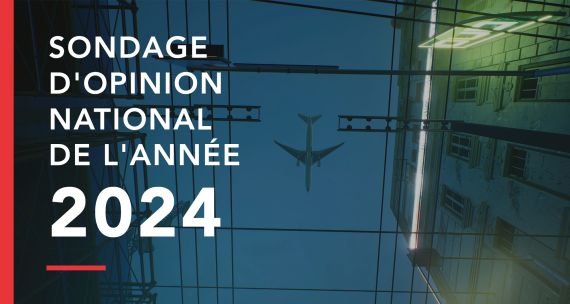The news that Canada and China have agreed to begin negotiations toward reaching an extradition treaty has led to a hasty rush to judgment.
A number of commentators have been quick to pillory the proposal, citing amongst other concerns: China’s high rate of executions, lack of due process and transparency in its “brutal” judicial system, and political motivations behind the current anti-corruption drive. There have also been suggestions that Canada’s agreement to start discussions was a quid pro quo for the release of Kevin Garratt.
The criticisms of China’s legal system, while fully justified, miss the essential point, which is that there are a number of good reasons for Canada to try to negotiate an extradition treaty with China.
When I say reach an extradition treaty, I mean the right extradition treaty, as was made clear by Prime Minister Justin Trudeau when he stated that Canada has high standards for such treaties and would follow a rigorous process consistent with Canadian values.
Canada’s most recent extradition treaty (with Italy, replacing an earlier treaty) defines an extraditable offence (it must be a crime in both countries), outlines standards of evidence required, and lists a number of mandatory and discretionary reasons why either party can refuse extradition. One can assume that a treaty with China will contain these conditions, and more.
While China does not have an extradition treaty with most western countries, it has one with Australia (not yet ratified by Australia), France, and Spain—all countries with a strong rule-of-law tradition (Spain in recent years). Therefore it is not inconceivable that Canada and China can find common ground, although the negotiation will not be easy and could take a number of years.
The federal government has assured Canadians that there was no direct connection between the release of Kevin Garratt and its agreement to start discussing a treaty; and there probably wasn’t any explicit linkage. The Chinese wanted to get an irritant out of the way before Premier Li Keqiang visited Canada and couldn’t lose face by releasing Garratt during Trudeau’s visit. The fact that there was constructive dialogue between the two countries at the most senior level no doubt helped resolve the issue.
It is most unlikely that the Trudeau government would agree to begin negotiations on a long-term and complex extradition treaty just to secure release on one consular case. Rather, the decision to proceed rests on the need to put legal issues with China on a firm and transparent basis.
It has been reported that Chinese agents have entered Canada posing as tourists in an attempt to track down fugitives from President Xi Jinping’s anti-corruption campaign, and to persuade them to return to China to face the music. These activities, known as “Operation Fox Hunt,” are widely known and have taken place in a number of countries besides Canada.
While not excusing these actions, which offend Canadian sovereignty, it is worth noting that such activities go back a long way, even before the launch of Xi’s anti-corruption drive. Notorious smuggler (and briber of Chinese officials) Lai Changxing, who entered Canada in 1999, claimed refugee status and fought extradition to China for 12 years before he was finally repatriated.
Lai’s saga was no doubt a contributing factor to China’s ill-advised “self-help” methods of pursuing convicted criminals abroad, but the best way to deal with these matters is to establish a front-door mechanism to replace the current back-door approach. Regular dialogue with Chinese authorities and a legal framework to handle cases like Lai’s would be a marked improvement over the status quo, and would help put an end to Chinese freelancing. That is the first benefit for Canada.
A second would be a means to control the enormous flows of hot money from China to Canada. No one knows for sure how much money is flooding into Canada, but the results are well known in terms of an inflated property market in metro Vancouver and suspicious high rollers at British Columbia casinos. Canada gets its fair share of the illegal outflow of money from China, in part because of weak enforcement of money-laundering regulations and lax enforcement at airports where suitcases of undeclared money have been seized, and then returned to their owners on payment of a nominal fine. In most other countries the funds are confiscated.
According to a report in the International Business Times last year, 26 of the top Chinese economic fugitives had sought refuge in Canada. Canada does not need these people. The surest way to stop the flow of hot money and corrupt officials from fleeing to Canada is to put in place an extradition treaty. They will quickly go elsewhere. Just the fact that Canada and China are talking about extradition (and the talks may go on for many years), will act as a significant disincentive. This is a second major benefit for Canada.
If Canada is able to conclude an agreement with China on the basis of its current extradition model and the assurances given by the prime minister, it will have helped nudge China closer to international judicial standards, and in the process will have removed a potential bilateral irritant, thus allowing Canada-China relations to move forward in other areas. China is pushing an agreement, in part to help it expand its network of bilateral treaties and tighten the noose on corrupt officials. This gives Canada leverage to get the kind of agreement that will be acceptable to the Canadian public. Here is yet another collateral benefit for Canada.
The critics are quick to condemn the Chinese judicial system, and to jump to the conclusion that Canada will become complicit. The best way to deal with China is to engage on the basis of Canadian interests and values and build a network of bilateral, legally-based treaty arrangements that will define the terms of co-operation. That is far better than decrying the Chinese system, but doing nothing about it.
This piece first appeared October 5, 2016 in The Hill Times.



